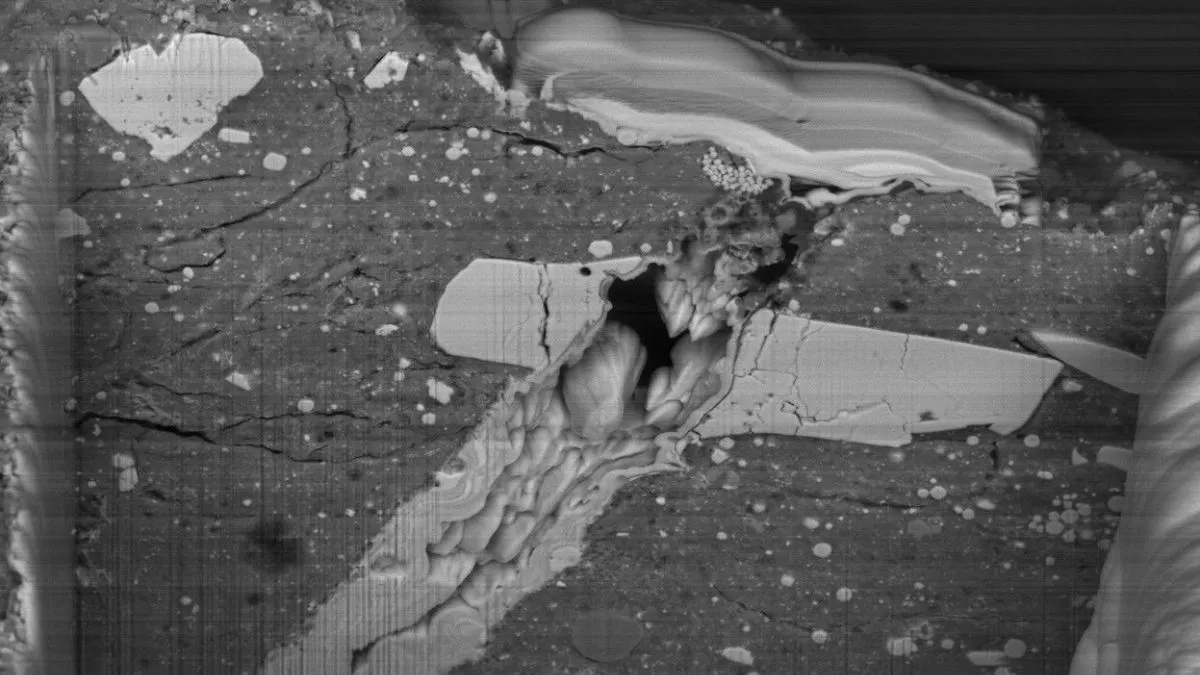- By Supratik Das
- Sat, 23 Aug 2025 02:00 PM (IST)
- Source:JND
In a historic moment in space exploration, NASA researchers have confirmed that asteroid Bennu contains grains of presolar stardust. This material predates the Sun and has remained mostly unchanged for billions of years. The discovery, based on samples collected by NASA's OSIRIS-REx mission, offers unique insights into the solar system's formation and the beginnings of life on Earth.
Scientists have discovered tiny grains in Bennu's dust and rock samples that were created near aging stars billions of years ago, billions of years before the Sun and planets formed. These grains, known as "stardust," have survived cosmic collisions, radiation, and chemical changes. They offer scientists a view into the environment before our solar system formed. Professor Sarah Russell from the Natural History Museum in London, who is part of the global research team, said, "Some of these particles have not been touched for billions of years." They tell us how planets, including our Earth, were built from the very first building blocks of the universe."
NASA's Historic OSIRIS-REx Mission
Launched in 2016, the OSIRIS-REx spacecraft traveled 322 million kilometers to reach Bennu, a carbon-rich near-Earth asteroid. In 2020, the spacecraft’s robotic arm collected about 120 grams of dust and stones from Bennu’s surface in a maneuver that took only seconds. After a two-year journey back, the sample capsule landed successfully on Earth in 2023. The study of the samples is now redefining scientific knowledge about how asteroids retain relics of the solar system's early days. NASA's Johnson Space Center in Houston is preserving the material, while researchers around the world are making precise chemical and isotopic analyses.
Laboratories, including the Natural History Museum in London and the University of Arizona, have discovered evidence of ancient water-driven reactions inside Bennu’s minerals. The findings suggest that Bennu’s parent asteroid — which likely formed beyond Saturn’s orbit — contained ice that melted over time, triggering chemical reactions with surrounding dust. Co-author of one of the studies in Nature Geoscience, Dr. Tom Zega, added, "Almost 80 per cent of Bennu's minerals have water in them," they discovered. This indicates that frozen material from the outer solar system heavily influenced asteroids like these and may have brought the building blocks of life to Earth.This adds weight to the long-standing theory that the components of life may have been seeded on our planet by asteroids and comets billions of years ago.
About Asteroid Bennu
The asteroid itself is a fragment of a much larger “parent” asteroid that broke apart after a violent collision in the asteroid belt between Mars and Jupiter. Scientists say this parent asteroid was a cosmic melting pot, containing materials from near the Sun, the outer solar system, and even interstellar space. Over time, Bennu endured countless micrometeorite strikes and solar wind exposure, processes known as space weathering. Researchers found tiny craters and splashes of once-molten rock on its surface, evidence of a violent history that continues to shape asteroids today.NASA Johnson's Dr. Lindsay Keller explained,“The surface weathering at Bennu is happening much faster than expected. These insights will help us understand not just Bennu but other asteroid bodies we haven’t visited yet.”
ALSO READ: What Is X-37B? SpaceX Launches US Military’s Secret Spaceplane On Mystery Mission | Watch
Interestingly, chemical and atomic comparisons among Bennu samples, Japan's Ryugu samples from the Hayabusa2 mission, and primitive meteorites on Earth indicate that these rocks from space could have been created in the same remote corner of the early solar system. However, variations in their compositions also show that this corner was more varied and less homogeneous than scientists had believed.
ALSO READ: Mars Survival Breakthrough? NASA Shares Video Of Tech That Could Generate Oxygen In Space | WATCH
Asteroids such as Bennu are time capsules of the history of the solar system. In contrast to meteorites that vaporize in the atmosphere of Earth and get rid of vital information, these unchanged samples give an accurate record of conditions 4.5 billion years ago. The Bennu mission marks the first time the United States has brought back samples from an asteroid. In the meantime, NASA is gearing up for its Artemis III mission, which will return lunar rocks from the Moon, another crucial step in solving the mystery of the solar system.

